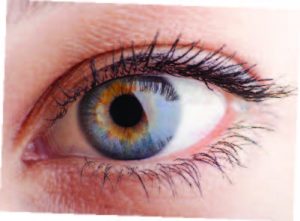News, views and insights on maintaining a healthy edge.
 Good News for Popeye
Good News for Popeye
In the world of healthy eating, spinach and other salad greens are the heroes. In the world of food poisoning, they have often played the role of villains. Over the last decade, no fewer than 18 nationwide food-poisoning outbreaks have been traced back to leafy greens. In 99% of the cases, the problem originates in the way they were washed, which sometimes fails to eliminate bacteria such as E. coli.

William Farrer, MD
Chief of Infectious Diseases Trinitas Regional Medical Center 908.994.5455
Dr. William Farrer, Chief of Infectious Diseases at Trinitas, points out that an outbreak in Europe in 2011 with a toxin-producing E. coli strain linked to sprouts sickened 852 people and killed 32. In the US, the Centers for Disease Control and Prevention estimates that 48 million Americans fall ill to food-related illnesses each year and about 3,000 people die each year from food poisoning. “Our modern food distribution system means that outbreaks linked to leafy vegetables can involve people in multiple states,” observes Dr. Farrer. The good news is that, at the last meeting of the American Chemical Society in Boston, a group of scientists presented a new, simple-to-implement parallel-plate flow chamber system that keeps bacteria from attaching to the outer layer of leaves. This method helps disinfecting rinses get to all parts of leaf surfaces equally; only 85% percent of surfaces on average get properly cleaned now. The USDA has already started funding the project. Dr. Farrer is encouraged by the government response: “Any process that can improve the washing of vegetables can potentially decrease the likelihood of these infections and make our food supply safer.”
 I Can’t Believe It’s Not Healthy
I Can’t Believe It’s Not Healthy
Distressing news for all of us raised on the eat-margarine-not-butter ethos: That thinking may be dead wrong. A survey of 1 million people in 50 recent studies by McMaster University in Canada has concluded that saturated fats from animal products do not appear to increase the risk of death from heart disease, diabetes or stroke.

Michelle Ali, RD
Director, Food and Nutrition, Trinitas Regional Medical Center 908.994.5396
Michelle Ali, Director of Food and Nutrition at Trinitas, explains that “the carbon chain of saturated fats consists of fatty acid ‘saturated’ with hydrogen. Trans fats are created by an industrial process that adds hydrogen to liquid vegetable oils. This addition of hydrogen makes these fats more solid at room temperature and gives them qualities that are similar to shortening or lard. Given that change in consistency, we’ve known for some time that trans fat has been linked to heart disease.” The Canadian researchers concluded that commercially produced trans fats found in snack foods, packaged baked goods and, yes, margarine, raised the risk of premature death by more than 30 percent. The research team was quick to add that this does not mean people should increase their intake of animal fats, which can lead to unhealthy weight gain. We should focus more on eating healthy including more whole grains, fruits, vegetables and lean meats, Ali suggests. “In general, we should reduce our intake of saturated fat and, of course, avoid foods that are known to contain trans fat.”
 Nickel for Your Thoughts
Nickel for Your Thoughts
If you had a nickel for every time you developed a weird skin rash…Well, in some instances, dietary nickel could actually be the culprit. Perhaps counter-intuitively, it’s a common cause of contact dermatitis. If a rash develops on your hands or elbows—or elsewhere after coming into contact with a zipper, belt buckle or other nickel-containing object—you may be mildly allergic to nickel. And the origin of that allergy could be foods such as wheat, rye, nuts, seeds and even chocolate, which are high in nickel. Other causes of nickel allergies can include medical devices containing the metal, including dental and orthopedic implants.
 Mouth to Mouth
Mouth to Mouth
Anthropologists don’t often make their way into the pages of What’s Up, Doc?, but a study by a joint team from Indiana University and the University of Nevada caught our attention. The anthropologists looked at attitudes toward kissing around the world. Although affectionate pecks on the cheek are common across most cultures, especially for babies and children, in most parts of the world romantic kissing kind of creeps people out. Indeed, in the 168 societies studied, only 46 percent see erotic value in the locking of lips. In fact, among cultures in the Amazon, New Guinea and sub-Saharan Africa, romantic kissing is practically unknown. According to

Rodger Goddard, PhD
Chief Psychologist, Trinitas Regional Medical Center Director of Wellness Management Services 908.994.7334
Dr. Rodger Goddard, Chief Psychologist at Trinitas and Director of Wellness Management Services, kissing spans the spectrum from a dangerous, unhygienic transmission of disease to the most intimate and caring exchange of love. And there are health benefits to kissing, too. Dr. Goddard notes that intimacy and positive relationships—whether sealed by a kiss or an old-fashioned hug—have been shown to improve one’s health and longevity. “Theories about the origins and reasons for kissing are varied, including evaluation of another’s most intimate biological, hormonal information to a reinforcement of trust, intimacy, closeness and sexual attraction to another,” he says, adding that, in a recent article by Dr. Noam Shpancer, men and women were found to differ on their views of kissing. “Half of men say they would have sex with a partner without the need for kissing, while only 14% of women would. Women were found to heavily weigh the overall quality of a kiss in their decision for commitment to someone.” Some Pacific island cultures practice a “kiss” where a couple’s lips pass a couple of centimeters apart without actually touching. Is the swapping of saliva such a health risk in these places that kissing never evolved? The Nevada study author couldn’t say. However, he did offer an alternative hypothesis: In many of these non-kissing cultures, people don’t brush their teeth.
 Now You See Me
Now You See Me
The concept of a bionic eye has intrigued us since The Six Million Dollar Man, but until recently the gulf between concept and execution seemed unbridgeable. That looks to be changing. Over the summer, a Florida woman who had been blind for 16 years (as a result of retinitis pigmentosa) held a press conference to announce that she has regained much of her sight thanks to the Argus II Retinal Prosthesis System, which she had implanted about a year ago. Carmen Torres was the 70th person in the world to receive the Argus II, which is currently the only FDA-approved system of its kind. Needless to say, the procedure is far from simple. More than 30 professionals were involved—from initial evaluation to implantation to post-operative training. The system features a photosensitive array of electrodes that is implanted directly on the retina, and eyeglasses that contain a tiny camera that transmits video to a pocket-sized computer. The computer then sends the signal to the implant, which emits pulses of electricity that bypass damaged photoreceptors in the eye and stimulate the retina’s remaining cells. Very cool.
 Weighty Issues
Weighty Issues
A study published recently on the website of The Journal of Pediatrics found that hospitals could do a much better job in the fight against childhood obesity. Of 300 clinically overweight/obese children admitted to Primary Children’s Hospital in Utah, only 4 percent had their condition directly addressed by physicians (or their medical student trainees).

Yelena Samofalov, MD Trinitas Pediatric Health Center 908.994.5750
Dr. Yelena Samofalov, MD, of the Trinitas Pediatric Health Center, explains why this may occur: “Discussing a child’s weight issues with parents can be challenging. The health care provider should express concern and also offer a plan of action. This is especially important since health problems such as diabetes, high blood pressure, sleep disturbances, and joint pain, have their roots in early childhood.” In the Utah study, Body Mass Index calculations of children were seldom performed and weight issues rarely included in discharge diagnoses. The study authors pointed out that this is true for most—but not all—US hospitals. Trinitas, for example, is proactive in fighting childhood obesity. “We take every opportunity to discuss healthy nutrition with our little patients and their parents,” says Dr. Samofalov. “We launched Eat Right Today!, a bilingual interactive educational program for parents and their children, to help them make healthy nutritional choices. Thanks to the program, kids and parents have shown great interest in the benefits of developing healthy eating habits.”
 Red Hot News on Chili Peppers
Red Hot News on Chili Peppers
Can eating spicy foods help you live longer? An international team of researchers led by the Chinese Academy of Medical Sciences says Yes. A five-year study involving nearly half a million participants aged 30 to 79 found that people who ate spicy meals once or twice a week had a 10% reduced risk of death compared to people consuming non-spicy diets. Individuals eating spicy food 3 to 7 times a week saw that risk drop to 14%. The correlation between spicy food and a reduction in cancer and heart and respiratory disease was greater for women, and also among those who did not consume alcohol. Fried and dried chili peppers were the most common ingredient in the spicy meals; they contain Capsaicin, vitamin C and other nutrients. Those who consumed fresh chilies also appeared to have a lower occurrence of diabetes. However, researchers stopped short of saying there is a direct link between capsaicin specifically and a lower risk of disease and death.





